Route: 500, (Murdishaw-) Widnes to Liverpool
Operator: Arriva
Timetable: 30m (Mon-Sun)
Time: ~1h 30m (~2h for full route)
Cost: £3.60 Single
Date of Trip: 17/2/20
Don’t Speke: Ian
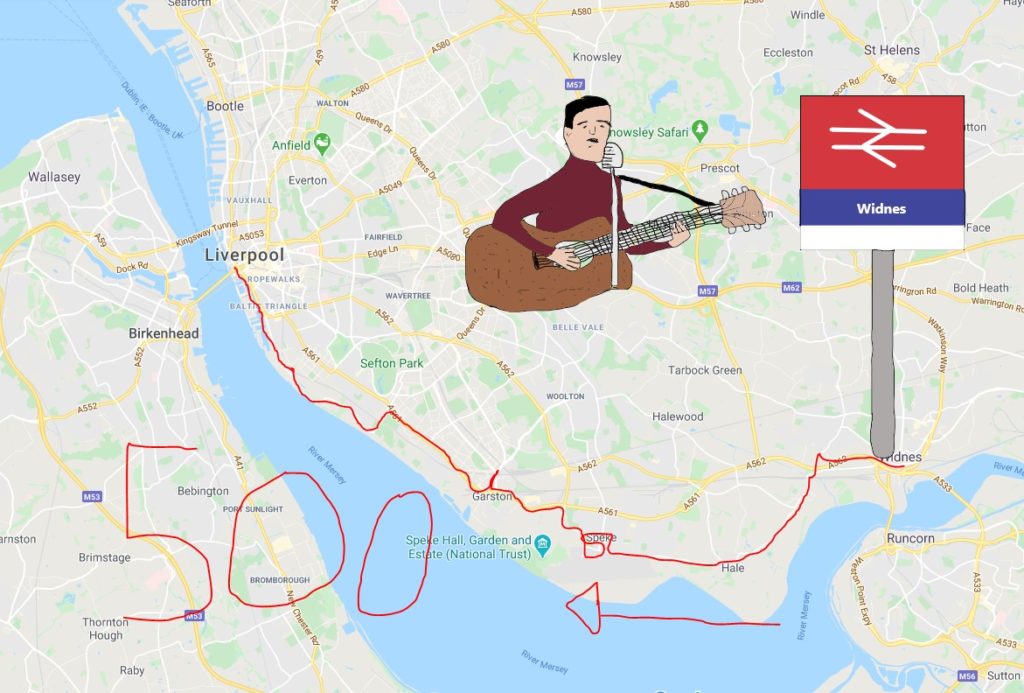
Not willing to admit defeat after my premature departure from the 62 stranded me in retail park hell, I follow my nose and fluke my way onto Widnes’s main drag. I’m enticed there by yelps, howls and the sound of guitar strings being attacked by a busker, whose interpretation of Mr Brightside needs filing away in the ‘innovative’ draw. He follows it with a Crimewatch reconstruction of Sex on Fire, which, the next time you’re at a wedding or birthday party, I guarantee the DJ will play in the same sequence.
Reeling from this aural assault, I’m on my way back to the bus stop when a middle-aged man rides past on the pavement astride a motorbike. An unzipped black coat flaps behind him like the Jolly Roger in a gale as he gains speed; except it isn’t a motorbike. He’s on a regular bicycle, but with what sounds and smells like a petrol engine revving away between his thighs. It’s not attached to anything other than the frame of the bike, and he whirls the pedals in first gear the second he hits a slight uphill section. This almost brings him to a halt, before he rediscovers his momentum and sputters towards Asda, his single cylinder making an impotent racket.
The bus turns up ten minutes late with the driver in a foul mood. Perhaps it’s thanks to the 500’s tardiness. It could be because his card reader is on the blink. But being called an “old twat” by a graceless teenager who disembarks with his smirking cronies probably clinched it.
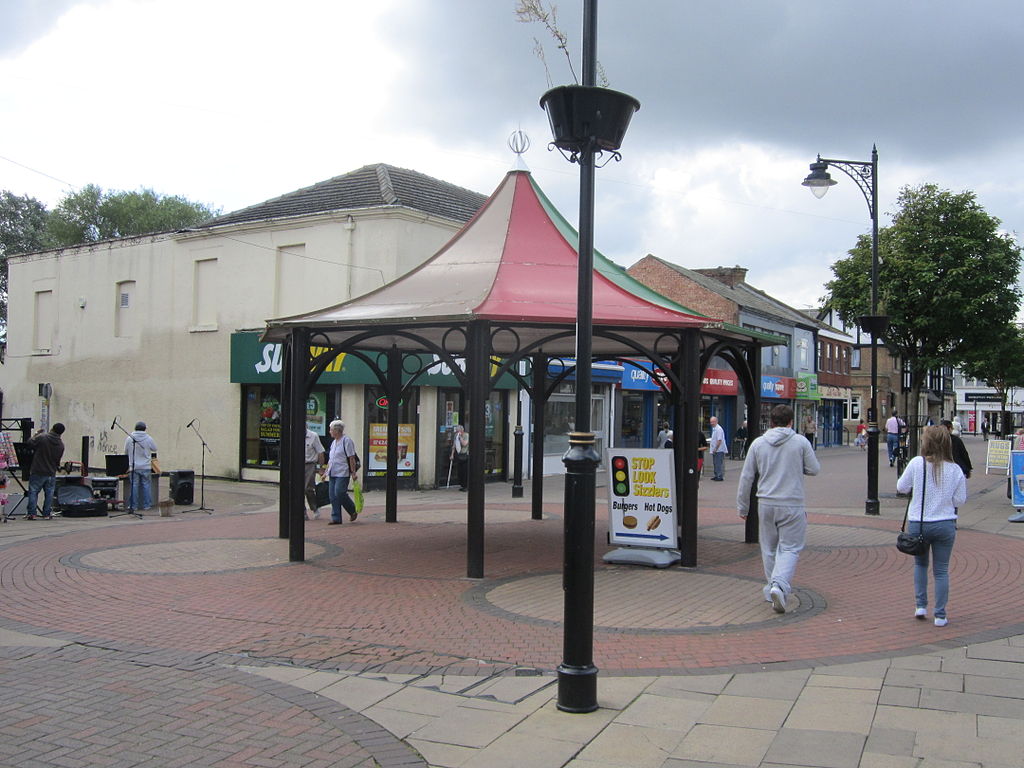
Passengers laden with bags and buggies fill up the remaining seats, and we begin a slow trudge through the suburbs. The Silver Jubilee Bridge, painted a fetching peppermint green and spanning the narrowest part of the Runcorn Gap looks stunning away to the left, but it’s the only highlight of a miserable first segment. You can see why Paul Simon wrote Homeward Bound here. A plaque at the railway station commemorates the moment Widnes cemented itself as somewhere to leave in a hurry, which in an ironic twist, brings in a dribble of curious tourists each year.
Paul Simon fans around the world have asked each other for decades, ‘It can’t be that bad, can it?’
‘Yes, it can,’ reply those who have seen Widnes for themselves. ‘Just count yourself lucky he didn’t write the song at Runcorn East.’
We turn into Ditton, where Jack and Vera Duckworth would nod their approval at the wealth of stone cladding on show. A lad in a grey tracksuit rides in the opposite direction up Hale Road on a BMX, with his diminutive mate sat on top of the handlebars: Elliott and E.T. ready to head off for their iconic moonlight ride. A car park on the edge of the estate has a comprehensive proscribed list. It bars unlicensed vehicles, camping, and in a harsh twist, the erection of booths. Booth-based entrepreneurs of Halton need to look elsewhere.
The road to Halebank is Mad Max territory. Abandoned prefabs, skeletal breeze block garages and the remains of carwashes dominate the landscape. Even a bus stop named ‘Merseyview’ is gilding the lily, with a dense screen of trees blocking the line of sight to the water. A giant would have more luck, and one of them lived in neighbouring Hale. Reputed to stand at 9’3”, John Middleton’s height would have made him taller than Robert Wadlow, the loftiest verified human in history, who could only muster a paltry 8’11” (2.72m).
Born here in 1578 and given the nickname, the Childe of Hale – ‘childe’ being an old English term for a young nobleman – his physical presence made him the perfect bodyguard for local landlord, Gilbert Ireland. On knighting Ireland in 1617, James I heard of Middleton, and invited both to the royal court. During his time in the capital, he defeated the king’s champion wrestler (breaking his thumb in the process), with the monarch so impressed that he awarded Middleton £20 for his trouble. That converts to over £2,500 nowadays, and would have been enough for him to buy two horses, ten cows or ample wool to set up his own spinning mill. Instead, travelling companions swindled him out of his winnings on the trip home to Hale, and with his patron still in London, he died penniless in 1623.
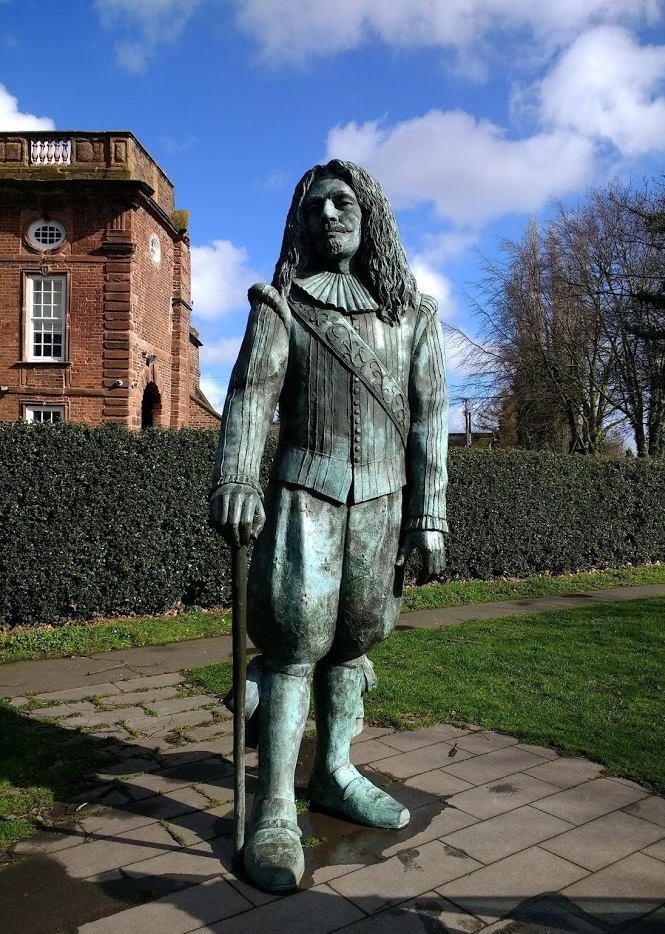
Hale itself is a total gear change. Pockmarked industrial estates give way to whitewashed conservation area homes. Thatched cottages lead to thatched mansions of ludicrous proportions, while fleeting glimpses of the Mersey make it appear no wider than a puddle. There’s another switch of scenery moments later when we reach Speke. Right on the periphery of Liverpool, it has the highest solar panel-to-roof ratio this side of Death Valley. With uninterrupted southern elevations, at least every third house captures the sunshine and contributes to the National Grid.
Liverpool City Council don’t seem to contribute much to Speke, though. Former playgrounds lie desolate, swings and roundabouts ripped from their moorings, too expensive to repair or replace. We pass just one row of shops, each deserted with their shutters drenched in graffiti. The only sign of life being a man on his haunches, dragging hard on a spliff outside a former funeral directors.
Everywhere has something going for it. It’s human nature to make the most of your hand, and Speke is awash with community groups, such as Grow Speke; an urban garden made from reclaimed wasteland.
Next up is Liverpool Airport. Or, Liverpool John Lennon Airport, as they re-dedicated it in 2001. He’s not the only musician honoured in this way. Louis Armstrong can claim New Orleans, Mozart has Salzburg, and Warsaw Airport pays homage to Chopin (who also has a terrifying statue on Manchester’s Deansgate). It still feels like a snub to the rest of The Beatles, especially as Paul and George grew up over the road in Speke. There should at least be a Paul McCartney Ferry Port, a George Harrison Bus Station or a Ringo Starr Taxi Rank.
We pick up a panoply of new passengers, all riffling for the correct change in the correct currency. The post-holiday blues haven’t hit two teenage girls from Crosby yet. Still giddy from their trip to Ibiza and legitimate tans, they burst into phlegmy dialect before their backsides touch down. Nobody swears like a Scouser, and for the next half an hour, the pair treat us to an f-word masterclass, with crackling white noise lobbed out whenever they broach a letter ‘k’.
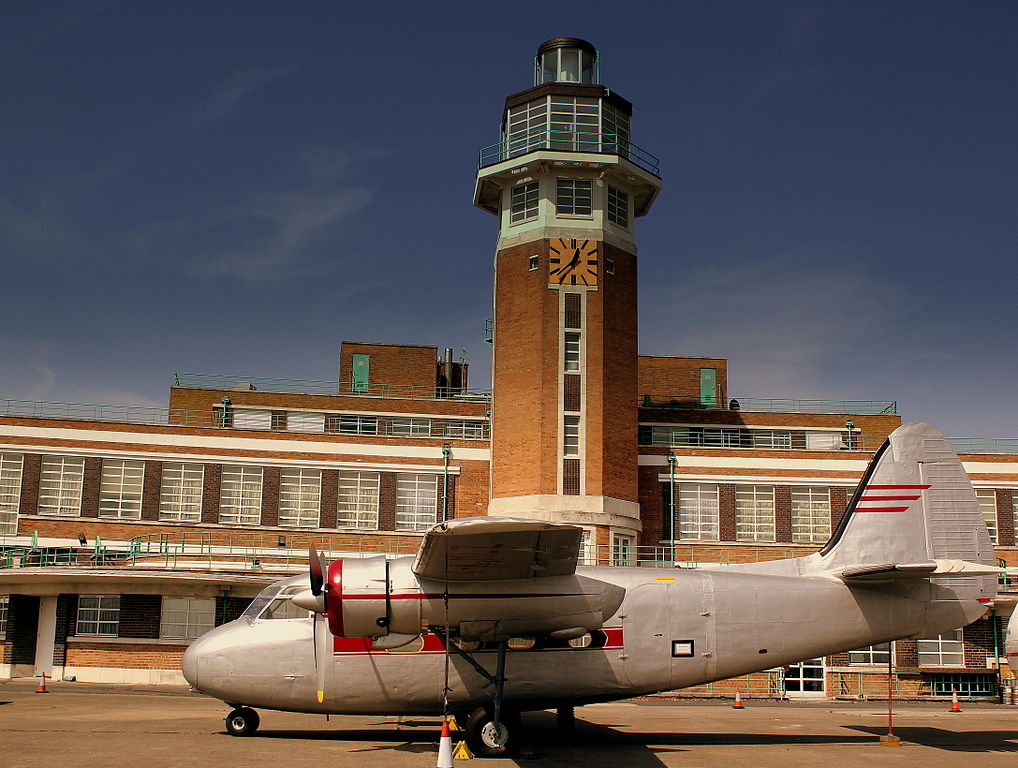
Once free of the airport, we pass gabled new builds with roofs so steep they’d make fantastic obstacles on Junior Kickstart. They’re the exception, though, as we press on through a no-man’s-land of warehouses and faceless offices. Their vast hangars nod to aeronautics with their names, albeit in a safe, corporate way – Airways House winning the prize for least imaginative. The Crowne Plaza Hotel has the right idea. Slotted into the terminal for what was once Speke Aerodrome, it still boasts the original control tower and vintage planes resting on the old apron.
Next door, The Matchworks is even better. Similar to the Hoover Building in London, but on a much grander and ornate scale. It’s a rare example of a factory whose aesthetics were as important as its function. Not that it churns out matches these days. They made their final phosphorous twigs back in 1994, with conversion into offices and workshops following suit.
We track the A561 as it changes from Garston Way to St. Mary’s Road to Aigburth Road, and light industry cedes ground to characterful terraces. They’re supplanted by rendered inter-war semis by the time we swing left at Otterspool Park to meet the Mersey. The sun burns through the cloud cover to reflect off the river’s surface, which has expanded from its earlier scrawny appearance into a gaping silver maw. It narrows as we progress north west. The Wirral peninsula funnels the outflow into an angry neck between Liverpool and Birkenhead. Docks are visible across the water, with Clwydian Range of hills in Wales on their tiptoes even further back.
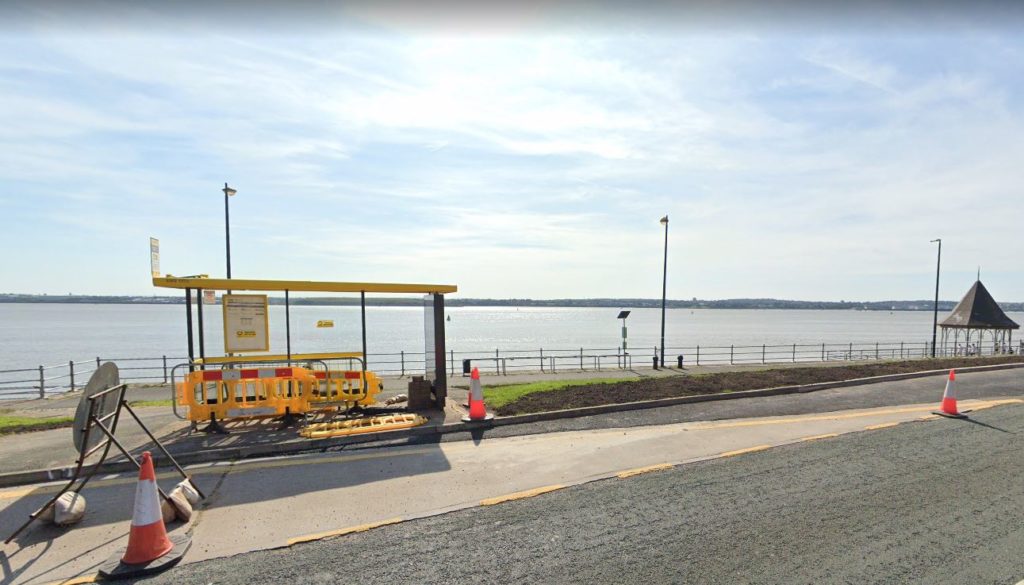
Toxteth’s reputation precedes it. Its name conjures images of riots, gang violence, and in our case, a plastic bottle of Lucozade Sport which cannons off the bus’s windscreen the moment we enter. As with the airport, what were once rickety dock buildings are being revived. Everything from go-kart tracks to dry cleaners and snazzy bars are springing up. Reputations change, but a few streets away from this regenerated facade, it’s still a tough corner of Liverpool.
It’s been a good fifteen years since I was last in this part of the city. In that time, developers have polished the waterfront to a sheen. No longer the sole preserve of Richard & Judy fans, it’s now the Liverpool Maritime Mercantile City, a UNESCO World Heritage Site. The bus station is right by the front, at the crucible of everything. Each direction holds a new treasure; the Liver Building, Tate Liverpool, and St. George’s Hall among them.
Liverpool is still an unfamiliar patch, but the more I walk around its grand limestone arteries and tangled warren of side streets, the more it grows on me. I know this is bordering on heresy coming from a Mancunian, but I guess Liverpool is sort of okay. If you like that kind of thing.
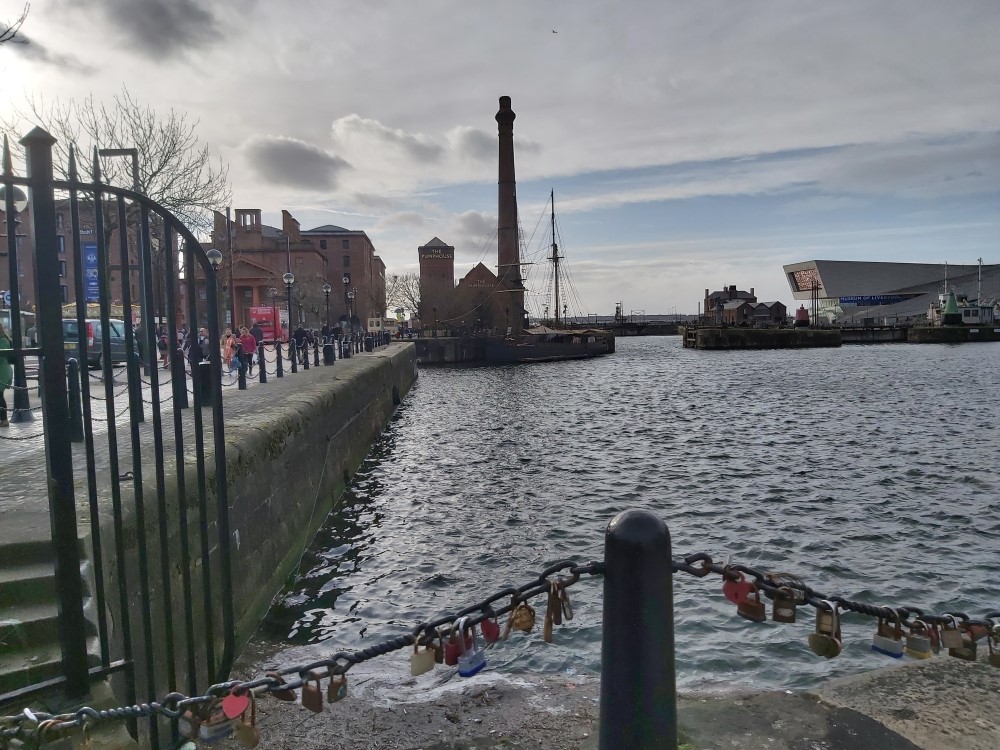
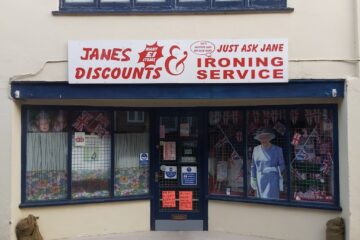
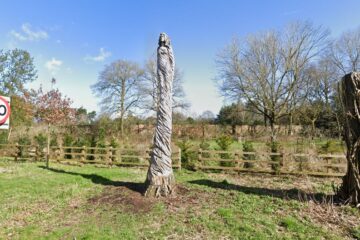
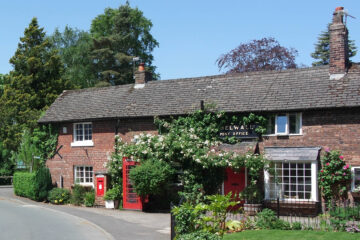
0 Comments